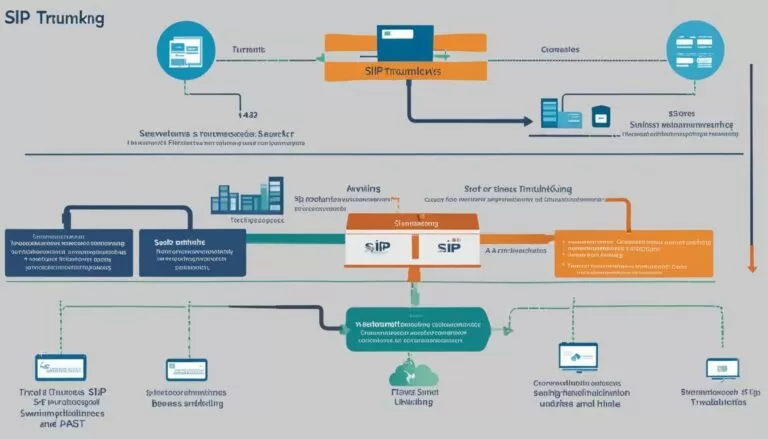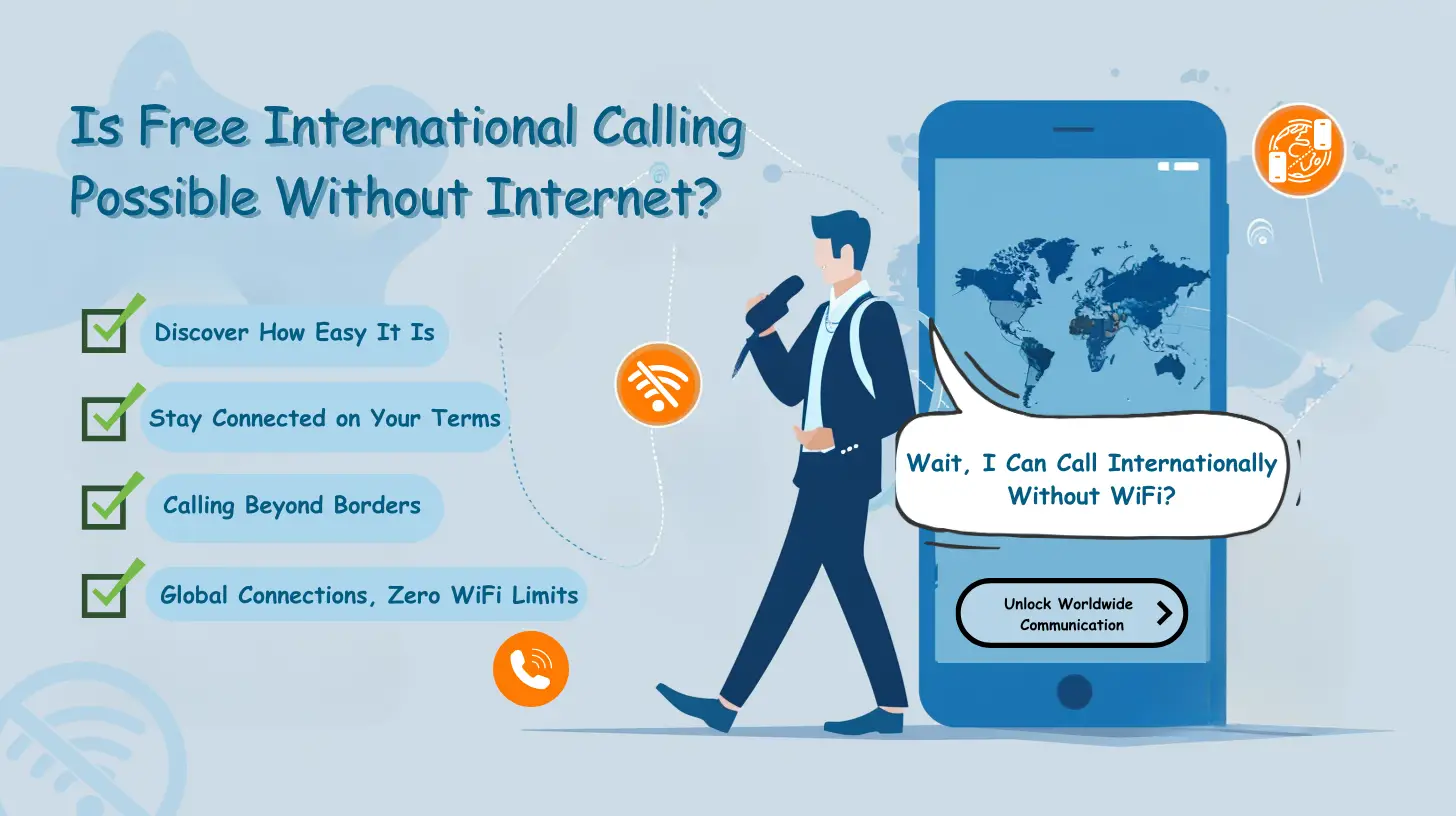SIP trunking and SIP gateway play crucial roles in modern telecommunications. Understanding their functionalities and advantages is essential for businesses in today’s digital world. SIP trunking, in simple terms, is a voice call method that helps streamline communication by connecting to an endpoint over the cloud. This technology allows for scalable and cost-effective voice calls, making it a preferred choice for businesses of all sizes. On the other hand, a SIP gateway serves as a bridge between legacy telephony and SIP-enabled VoIP systems. It allows the connection of legacy phone systems with SIP resources or modern VoIP phone systems with legacy phone lines.
Key Takeaways:
- SIP trunking enables scalable and cost-effective voice calls over the cloud.
- A SIP gateway connects legacy phone systems with SIP resources or modern VoIP phone systems with legacy phone lines.
- SIP trunking offers benefits such as fantastic call quality, global scalability/mobility, ROI, consolidation of communication systems, ease of use, and the elimination of physical infrastructure.
- Security measures like encryption, protection against malware attacks, and setting up a virtual LAN are important for secure SIP calls.
- Choosing a reputable SIP trunking provider is crucial, considering factors such as platform interoperability, real-time data availability, security protocols, choice of internet provider, and compatibility with existing PBX systems.
Now that we’ve laid the foundation for understanding SIP trunking and SIP gateway, let’s dive deeper into the specifics of each and explore their functionalities, benefits, and considerations for implementation.
What is SIP Trunking?
SIP trunking is a method of voice call transmission that leverages the Session Initiation Protocol (SIP) to establish and manage communication sessions over the internet. It allows businesses to streamline their communication processes by connecting to an endpoint via the cloud, eliminating the need for traditional phone lines. With SIP trunking, businesses can enjoy scalable and cost-effective voice calls that offer exceptional call quality.
By utilizing SIP trunking, companies can benefit from a variety of advantages. Firstly, it provides global scalability and mobility, allowing businesses to expand their communication capabilities beyond geographical boundaries. Additionally, SIP trunking offers a return on investment (ROI) by eliminating the need for physical infrastructure, reducing maintenance costs, and enabling the consolidation of communication systems.
Another benefit of SIP trunking is its ease of use. It allows businesses to seamlessly integrate their existing phone systems with SIP-enabled VoIP technology, enabling efficient communication without the need for complex configurations. Furthermore, SIP trunking eliminates the constraints of traditional telephony systems, offering businesses the ability to make and receive multiple calls simultaneously, greatly improving overall productivity.
Benefits of SIP Trunking:
- Fantastic call quality
- Global scalability and mobility
- Return on Investment (ROI)
- Consolidation of communication systems
- Ease of use
- Elimination of physical infrastructure
Overall, SIP trunking is a cost-effective and reliable communication technology that enables businesses to enhance their communication capabilities while reducing costs and improving flexibility. By leveraging the power of SIP trunking, businesses can stay connected and collaborate efficiently in today’s digital age.
SIP trunking works by connecting a business’s phone system to the Public Switched Telephone Network (PSTN) through an internet connection, eliminating the need for traditional phone lines.
When a call is made, the voice data is converted into packets and transmitted over the internet using the Session Initiation Protocol (SIP). These packets are then received by the SIP trunk, which acts as a virtual phone line, connecting the call to the PSTN network.
This technology enables businesses to make and receive calls using their existing internet connection, offering scalability and cost savings compared to traditional phone systems. It also allows for advanced features such as simultaneous call handling, virtual phone numbers, and seamless integration with Unified Communication platforms.
| Benefits of SIP Trunking | SIP Trunking Providers | SIP Trunking Solution |
|---|---|---|
| Improved call quality | Choice of reputable providers | Scalable and flexible |
| Global scalability and mobility | Platform interoperability | Cost-effective communication |
| Return on Investment (ROI) | Real-time data availability | Reduced physical infrastructure |
Benefits of SIP Trunking
SIP trunking offers numerous advantages that contribute to more efficient and cost-effective communication for businesses of all sizes. With SIP trunking services, businesses can enjoy improved call quality, seamless global scalability and mobility, and a significant return on investment (ROI).
One of the key benefits of SIP trunking is the consolidation of communication systems. By leveraging SIP trunking, businesses can eliminate the need for multiple physical phone lines and instead route all voice calls over a single internet connection. This not only reduces infrastructure costs but also simplifies management and maintenance.
SIP trunking also provides businesses with enhanced ease of use. With a SIP trunking solution in place, businesses can easily scale their communication capabilities up or down based on their needs. Adding or removing users, setting up virtual phone numbers, and managing call routing becomes a breeze, allowing businesses to adapt quickly to changing requirements.
Additionally, SIP trunking eliminates geographical limitations, enabling businesses to establish a virtual presence in multiple locations. This global scalability and mobility allow for seamless communication between different branches, remote employees, and customers around the world.
Table: Benefits of SIP Trunking
| Benefits | Description |
|---|---|
| Improved Call Quality | SIP trunking ensures clear voice transmission and reduces call dropouts or disruptions. |
| Cost Savings | SIP trunking eliminates the need for traditional phone lines, resulting in significant cost savings. |
| Consolidation of Communication Systems | Businesses can streamline their communication infrastructure by routing voice calls over a single internet connection. |
| Ease of Use | SIP trunking simplifies the management and administration of communication systems, allowing businesses to easily scale and adapt. |
| Global Scalability and Mobility | SIP trunking enables seamless communication across different locations, facilitating collaboration and remote work. |
Overall, SIP trunking services provide businesses with a flexible, scalable, and reliable communication technology. By leveraging the benefits of SIP trunking, businesses can optimize their communication infrastructure, reduce costs, and enhance productivity.
Protecting the integrity and confidentiality of SIP calls is of paramount importance in today’s interconnected digital landscape. As businesses increasingly rely on SIP trunking for their communication needs, implementing robust security measures has become crucial. By following best practices, businesses can minimize the risk of unauthorized access, eavesdropping, and interception of sensitive information.
Encryption plays a vital role in securing SIP calls. By encrypting the data packets transmitted over the network, businesses can prevent unauthorized parties from deciphering the contents of the communication. Implementing Transport Layer Security (TLS) or Secure Real-Time Transport Protocol (SRTP) ensures end-to-end encryption, providing a secure communication channel.
In addition to encryption, businesses should also protect their SIP trunking infrastructure from malware attacks. Regularly updating security software, implementing firewalls, and using intrusion detection systems can help prevent and detect any malicious activity. It is also essential to monitor network traffic for any suspicious behavior and promptly address any security incidents.
Setting up a Virtual LAN
To enhance security further, businesses can set up a Virtual LAN (VLAN) specifically for SIP trunking traffic. By isolating SIP traffic from other network traffic, VLANs provide an additional layer of protection against potential threats. This segregation prevents unauthorized access to SIP communication and helps mitigate the risk of attacks targeting other network resources.
Implementing comprehensive security measures, including encryption, malware protection, and VLANs, can safeguard SIP trunking infrastructure and prevent unauthorized access. By prioritizing security, businesses can ensure the confidentiality and integrity of their SIP calls, protecting sensitive information and maintaining the trust of their customers.
The choice of a reputable and reliable SIP trunking provider can significantly impact the quality and success of your communication infrastructure. With numerous providers in the market, it’s crucial to evaluate several factors to ensure you make the right decision for your business needs. Here are some key considerations when choosing a SIP trunking provider:
- Platform interoperability: Look for a provider that offers compatibility with your existing systems and equipment, such as your PBX (Private Branch Exchange) system. Seamless integration is essential for a smooth transition.
- Real-time data availability: A reliable provider should offer real-time reporting and analytics to monitor and optimize your communication performance. This data can help you make informed decisions and ensure that your voice calls are consistently of high quality.
- Security protocols: Consider the security measures implemented by the provider to safeguard your communication networks. Look for encryption protocols to protect your voice calls from unauthorized access and potential threats.
- Choice of internet provider: Evaluate the internet service providers (ISPs) supported by the SIP trunking provider. It’s important to ensure that your chosen internet provider is compatible with the provider’s network infrastructure to maintain a reliable connection.
- Compatibility with existing PBX systems: If you have an existing PBX system, ensure that the SIP trunking provider supports your system’s make and model. Compatibility is essential for a seamless integration that maximizes the benefits of SIP trunking.
By considering these factors, you can make an informed choice when selecting a SIP trunking provider. Remember that the right provider will not only meet your current communication needs but also offer scalability and flexibility for future growth. Taking the time to find the right partner will ensure a reliable and cost-effective communication solution for your business.
| Provider | Platform Interoperability | Real-Time Data Availability | Security Protocols | Choice of Internet Provider | Compatibility with Existing PBX Systems |
|---|---|---|---|---|---|
| Provider A | ✓ | ✓ | ✓ | ✓ | ✓ |
| Provider B | ✓ | ✓ | ✓ | ✓ | ✘ |
| Provider C | ✓ | ✓ | ✓ | ✓ | ✓ |
| Provider D | ✓ | ✓ | ✓ | ✓ | ✓ |
| Provider E | ✓ | ✓ | ✓ | ✓ | ✓ |
SIP Trunking Cost Considerations
Understanding the financial aspects of SIP trunking is crucial for businesses looking to optimize their communication expenses. SIP trunking offers a cost-effective solution for voice calls by utilizing an internet connection instead of physical lines. By leveraging the power of the internet, businesses can significantly reduce their telephony costs while maintaining high-quality communication.
When considering the cost of SIP trunking, it is important to take into account several factors. Firstly, businesses should evaluate the setup costs, which typically involve the initial configuration and integration of the SIP trunking system with their existing communication infrastructure. Although there may be upfront costs, the long-term savings in terms of reduced call rates and elimination of physical infrastructure make it a worthwhile investment.
Monthly fees are another cost consideration. These fees are typically charged by SIP trunking providers for the ongoing use of their services. It’s important to carefully review the pricing structure and compare it with other providers to ensure you are getting the best value for your money. Additionally, businesses should consider the potential for cost savings compared to traditional telephony systems, as SIP trunking allows for virtual presence and scalability without the need for expensive hardware.
To visualize the financial implications of SIP trunking, here is a table summarizing the key cost considerations:
| Cost Consideration | Description |
|---|---|
| Setup Costs | Initial configuration and integration of SIP trunking system |
| Monthly Fees | Ongoing charges for SIP trunking services |
| Potential Cost Savings | Comparison of savings compared to traditional telephony systems |
By carefully evaluating these cost considerations and choosing a reputable SIP trunking provider, businesses can optimize their communication expenses and enjoy the benefits of this scalable and reliable communication technology.
SIP trunking provides businesses with a flexible and cost-effective solution for voice communication. The ability to leverage internet connectivity for voice calls allows for global scalability, virtual presence, and significant cost savings. By understanding the financial aspects of SIP trunking and carefully considering the setup costs, monthly fees, and potential savings, businesses can make informed decisions and optimize their communication expenses.
SIP Gateway Explained
A SIP gateway serves as a vital link between legacy phone systems and modern SIP-enabled VoIP technologies. It plays a crucial role in bridging the gap between traditional telephony and the world of internet-based communication. By connecting legacy phone systems with SIP resources or modern VoIP phone systems with legacy phone lines, a SIP gateway enables seamless communication across different platforms.
Unlike a SIP trunk, which focuses on streamlining voice calls over the internet, a SIP gateway extends the functionality of existing telephony infrastructure. It allows businesses to leverage the benefits of SIP technology without the need for a complete overhaul of their communication systems. This makes it an ideal solution for organizations looking to transition gradually to SIP without disrupting their current operations.
A SIP gateway provides compatibility and interoperability between different telephony protocols. It acts as a translator, converting signals between digital and analog formats to ensure seamless communication between SIP-based VoIP systems and traditional phone lines. This flexibility enables businesses to maintain their existing phone systems while gradually integrating SIP-based solutions for increased efficiency and cost savings.
In summary, a SIP gateway serves as a crucial component in the evolution towards modern communication technologies. By bridging the gap between legacy phone systems and SIP-enabled VoIP, it enables businesses to unlock the benefits of scalable, cost-effective, and feature-rich communication. With a SIP gateway in place, organizations can seamlessly integrate new technologies while maintaining compatibility with their existing infrastructure.
Key Considerations for SIP Gateway Implementation
To ensure a smooth and successful SIP gateway implementation, businesses need to evaluate their specific requirements and choose a reliable provider that offers the necessary features and support. When selecting a SIP gateway provider, several key considerations should be taken into account.
Table 1: Factors to Consider when Choosing a SIP Gateway Provider
| Factor | Description |
|---|---|
| Provider Reputation | Research the provider’s reputation in the industry and read reviews from other customers to ensure their reliability and quality of service. |
| Feature Availability | Check if the provider offers the specific features and functionalities required for your business, such as support for legacy systems or integration with existing infrastructure. |
| Scalability | Consider the provider’s ability to accommodate future growth and scalability needs. Ensure that their solutions can easily scale as your business expands. |
| Support and Service Level Agreements (SLAs) | Evaluate the level of customer support the provider offers, including their response time, availability, and any SLAs they have in place to guarantee service uptime. |
| Cost | Compare costs and pricing structures among different providers. Consider setup fees, monthly charges, and any additional expenses that may be involved. |
| Reliability and Redundancy | Ensure that the provider has reliable network infrastructure and redundant systems in place to minimize the risk of downtime and ensure continuous service availability. |
By carefully evaluating these factors and selecting a reputable SIP gateway provider that meets your business’s specific needs, you can ensure a successful implementation that enhances your communication capabilities and supports your overall business goals.
Conclusion
SIP trunking and SIP gateway provide businesses with powerful tools to transform their communication infrastructure, enabling enhanced connectivity, scalability, and cost savings. SIP trunking, as a voice call method, streamlines communication by connecting to an endpoint over the cloud, offering benefits such as fantastic call quality, global scalability/mobility, ROI, consolidation of communication systems, ease of use, and the elimination of physical infrastructure.
On the other hand, a SIP gateway plays a crucial role in bridging legacy telephony with SIP-enabled VoIP. It connects legacy phone systems with SIP resources or modern VoIP phone systems with legacy phone lines, allowing businesses to leverage existing infrastructure while benefiting from advanced communication technology.
When implementing SIP trunking and SIP gateway, businesses should prioritize security. Encryption, prevention of malware attacks, and setting up a virtual LAN are recommended to ensure the secure transmission of SIP calls.
Choosing a reputable SIP trunking provider is essential for a successful implementation. Factors to consider include platform interoperability, real-time data availability, security protocols, choice of internet provider, and compatibility with existing PBX systems. By carefully selecting a provider, businesses can optimize their communication infrastructure and take advantage of the cost savings, virtual presence, and scalability offered by SIP trunking.
In summary, SIP trunking and SIP gateway are valuable tools that businesses can utilize to revolutionize their communication systems. By embracing these technologies, companies can enhance their connectivity, scale their operations, and save costs, ultimately improving their overall communication efficiency and effectiveness.



































